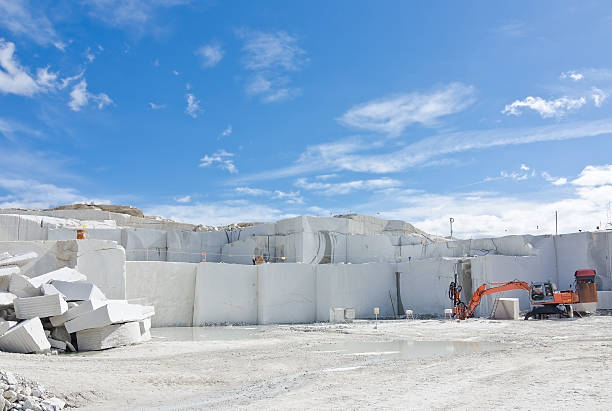Introducing the Mysteries of Granite Quarrying: Where Strength and Style Meet
The globe of granite quarrying is a world where the raw strength of nature merges with human artistry to create frameworks that stand the test of time with an air of beauty. From the depths of quarries to the precise polishing in workshops, the process of changing granite right into architectural marvels is a complicated dance of custom and development. As we peer right into the depths of this old craft, we begin to uncover the surprise intricacies that form the extremely significance of our constructed atmosphere.
The Origins of Granite Quarrying
In the record of architectural history, the beginnings of granite quarrying are shrouded in a tapestry of ancient workmanship and geological wonders. Going back to old Egypt and Mesopotamia, the removal of granite from quarries marked the beginning of a trip that would eventually cause the creation of a few of the world's most iconic structures.
Granite quarrying's roots can be traced to the knowledgeable artisans who identified the stone's longevity and aesthetic allure. Through a mix of primitive devices and large determination, these early quarry employees unearthed granite blocks that would end up being the structure blocks of civilizations.
As civilizations progressed, so did the strategies of quarrying granite. The Romans, renowned for their design prowess, created sophisticated approaches for removing granite to build monoliths, temples, and roads that stood the examination of time.
The tradition of these old quarrying techniques proceeds to shape modern-day architecture, with granite remaining an icon of toughness and beauty in construction projects around the world. (granite quarries in south africa)
Devices of the Quarrying Trade
The development of granite quarrying techniques from ancient human beings to modern times highlights the vital role played by the devices of the quarrying profession in shaping the industry's practices. In old times, quarrying tools were primary, frequently including chisels, hammers, and wedges made from materials like bronze or iron. These devices called for considerable workforce and time to essence granite blocks from quarries.

Furthermore, the intro of pneumatic devices and high-powered machinery has actually significantly decreased the physical labor required in quarrying procedures, enhancing employee security and efficiency. As the quarrying market proceeds to innovate, the devices of the trade remain at the leading edge of driving progress and shaping the future of granite extraction.
Drawing Out Blocks of Granite
Using precision machinery and advanced methods, the extraction of granite blocks from quarries has ended up being an advanced procedure in the contemporary quarrying market. Managed blasting methods are then utilized to break apart the granite into manageable areas.

Polishing and Finishing Strategies
To attain a remarkable surface area on granite blocks, competent craftsmens employ a collection of meticulous sprucing up and finishing techniques. After the initial extraction and shaping processes, the granite obstructs undergo a thorough polishing stage to boost their natural beauty and durability. One common method utilized in brightening granite is ruby abrasion, where industrial rubies are used to grind and brighten the rock to a smooth surface. This process not just produces a lustrous surface however additionally ensures harmony in shade and appearance across the granite block.
In addition to polishing, finishing techniques are applied to more refine the granite's look. By meticulously selecting and applying these brightening and ending up techniques, artisans can change raw granite obstructs into exquisite pieces that anonymous showcase both strength and style.

Ecological Effect and Sustainability
With the expanding focus on environmental awareness in the sector, granite quarrying practices are progressively looked at for their impact on all-natural sources and lasting sustainability. Furthermore, the transportation of granite from quarries to processing facilities generates carbon discharges, further contributing to ecological deterioration.
To reduce these influences and make sure sustainability in granite quarrying, sector stakeholders are embracing various actions. Carrying out advanced modern technologies to decrease power consumption and water usage, redeeming quarried land for eco-friendly remediation, and advertising liable sourcing techniques are some techniques being utilized. In addition, accreditations such as the Forest Stewardship Council (FSC) and the Leadership in Power and Environmental Layout (LEED) aid consumers recognize eco-friendly granite items.
Final Thought
In final thought, granite quarrying is a procedure that needs specialized devices and techniques to remove blocks of granite and brighten them to a high degree of coating. While the environmental effect of quarrying can be significant, efforts are being made to improve sustainability techniques in the market. On the whole, granite quarrying is a delicate equilibrium between harnessing the toughness and beauty of this natural rock while minimizing Read Full Report its effect on the atmosphere.